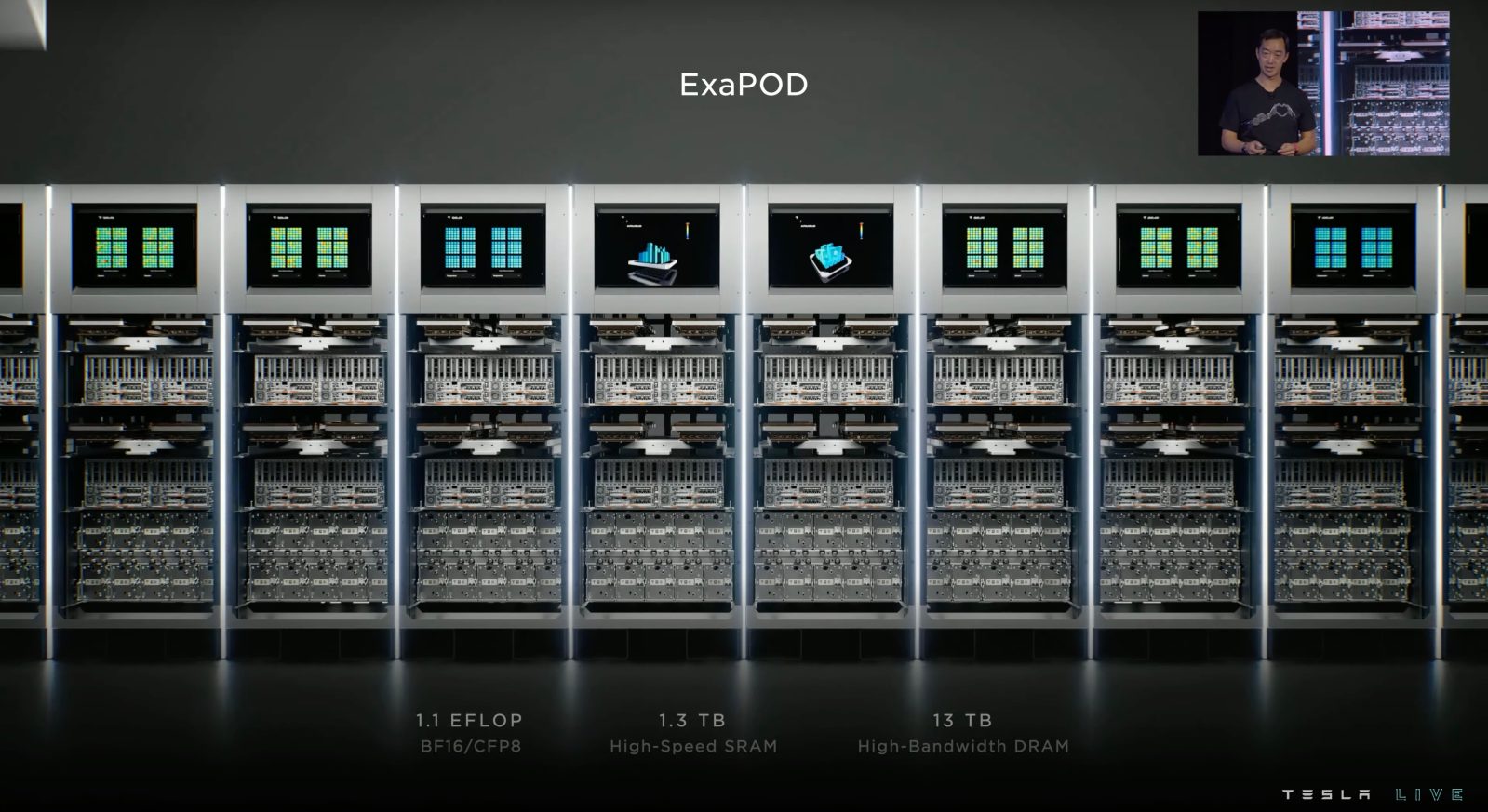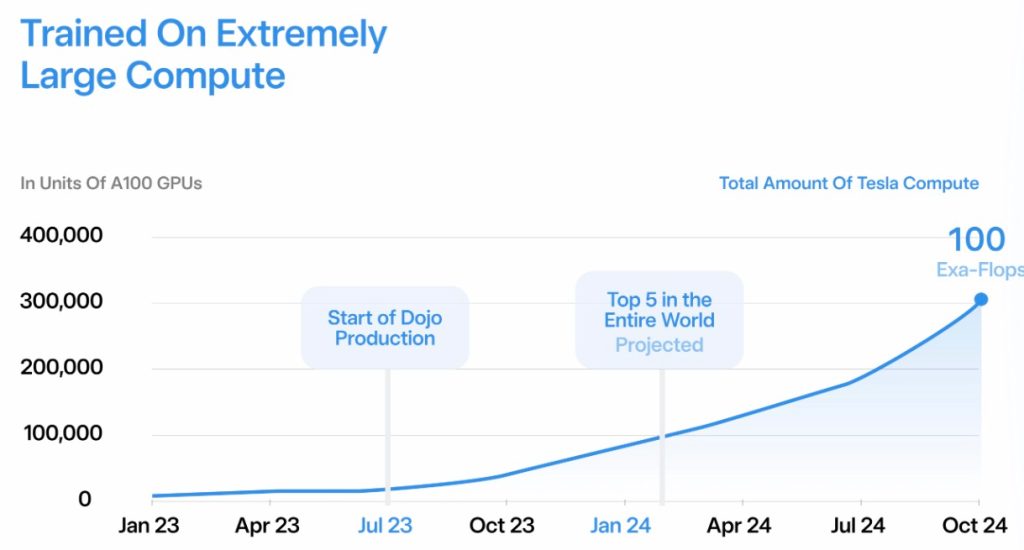
Tesla says its long-awaited Dojo supercomputer, which is supposed to bring its self-driving effort to a new level, is finally going into production next month.
Dojo is Tesla’s own custom supercomputer platform built from the ground up for AI machine learning and, more specifically, for video training using the video data coming from its fleet of vehicles.
The automaker already has a large NVIDIA GPU-based supercomputer that is one of the most powerful in the world, but the new Dojo custom-built computer uses chips and an entire infrastructure designed by Tesla.
The custom-built supercomputer is expected to elevate Tesla’s capacity to train neural nets using video data, which is critical to the computer vision technology powering its self-driving effort.
At Tesla’s AI Day in 2021, the company unveiled its Dojo supercomputer, but the company was still ramping up its effort at the time. It only had its first chip and training tiles, and it was still working on building a full Dojo cabinet and cluster, or “Exapod.”
A year later, at AI Day 2022, Tesla unveiled some progress on Dojo, including having a full system tray. At the time, the automaker was talking about having a full cluster by Q1 2023.
The first quarter of the year came and went without any news of Dojo being in operation.
Now Tesla has shared an update on Dojo via its new Tesla AI Twitter account (Tesla’s fifth new Twitter account since Elon Musk bought the social media platform).
The company says that it is going into production in July:

According to the timeline, Tesla will keep adding trays and cabinets to the system until the cluster becomes one of the most powerful supercomputers in the world by early 2024, and it sounds like Tesla plans to surpass that greatly by the end of next year.
With Dojo, Tesla is expected to finally be able to take full advantage of its extremely large database of real-world driving scenarios, which it has been accumulating through millions of vehicles for years now.
Electrek’s Take
Top comment by Bruno Dugas
I was just thinking yesterday, as I was driving 60 miles on FSD in my Model Y, that based on the errors it was making on this simple drive, that it would take another 5-7 years to be accepted by the governing authorities. In April, I drove 1,500 miles from Florida to Ottawa, on FSD for 99% of the trip. FSD can handle the most situations but must handle all of them to be useful. Typically with software, exceptions will make up 90% of the code. Dojo could make that happen earlier, and this approach is certainly the future. Musk has proven to be a visionist and this is just another example. Even if it does take a few extra years, we are heading in the right direction.
Many people (like me) who haven’t been impressed by the rate of improvement of Tesla’s FSD Beta are hoping that Dojo will increase that rate.
I am not super hopeful, but it is my best hope for FSD Beta.
I would assume it is also Elon Musk’s hope. Otherwise, I don’t see Tesla achieving true autonomy for years, and Musk seems convinced it is going to happen this year.
Do you have high hopes for Dojo? Let us know in the comment section below.
FTC: We use income earning auto affiliate links. More.




Comments